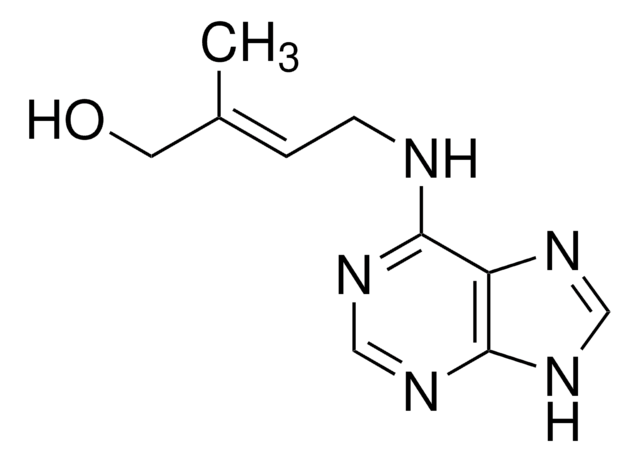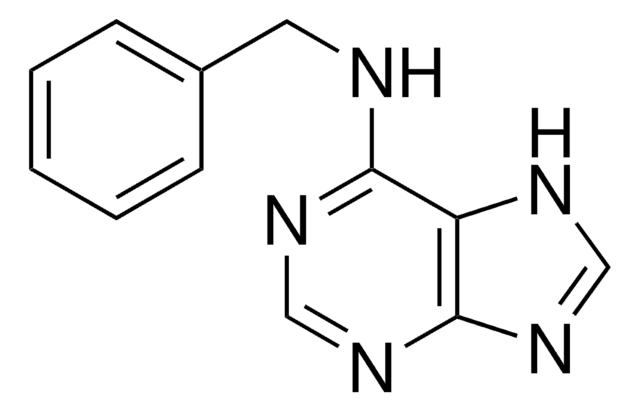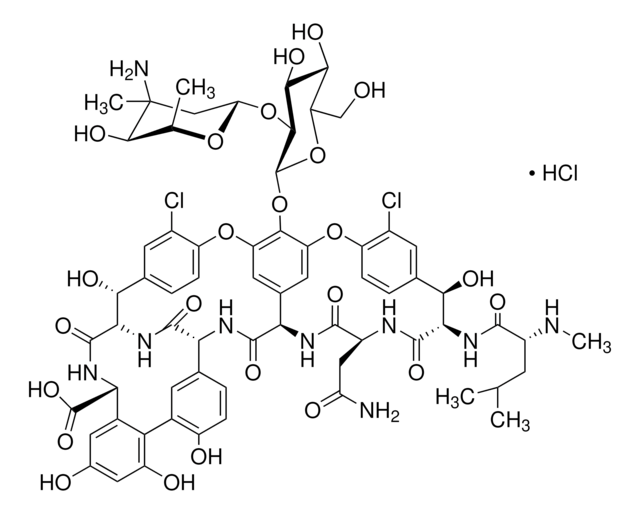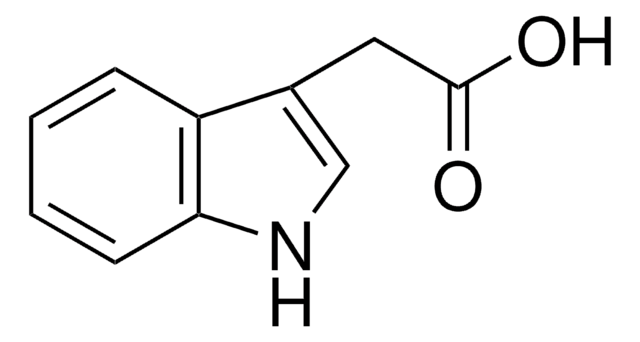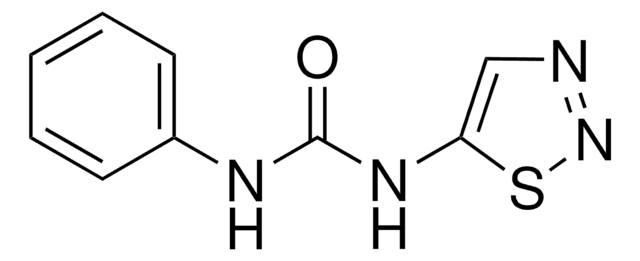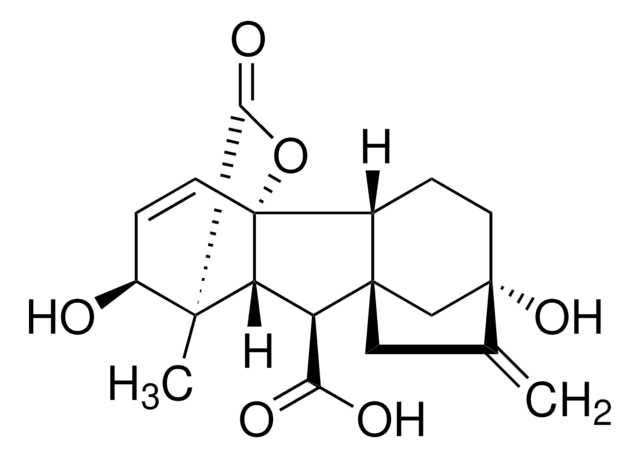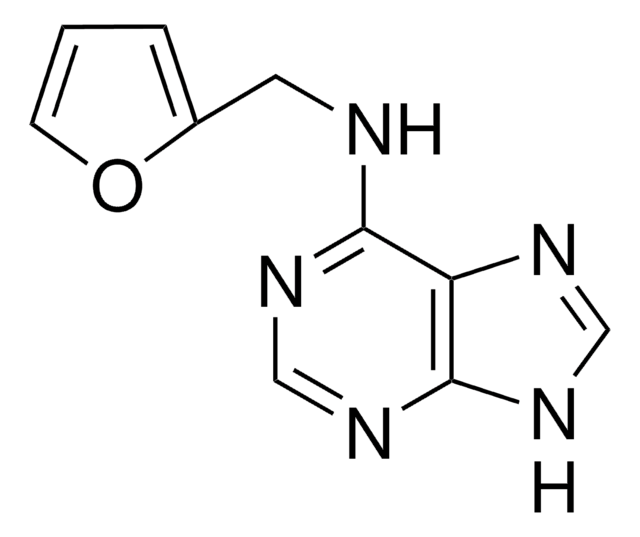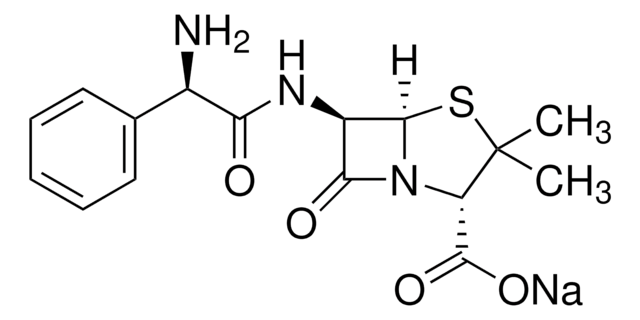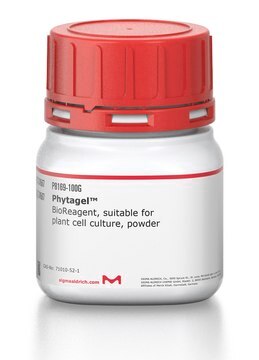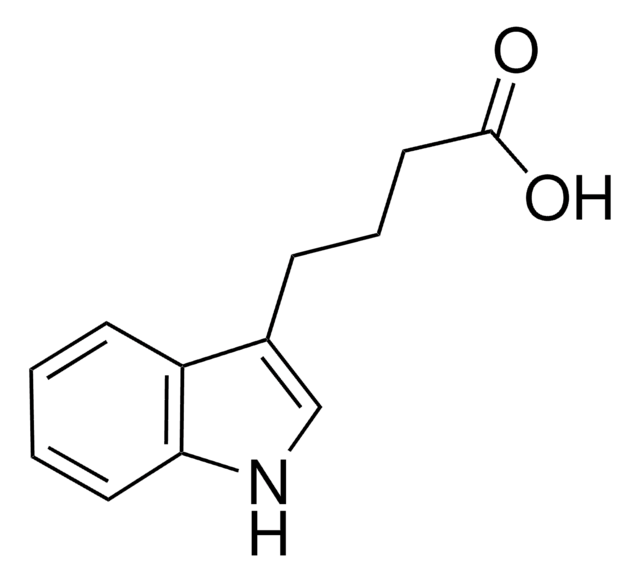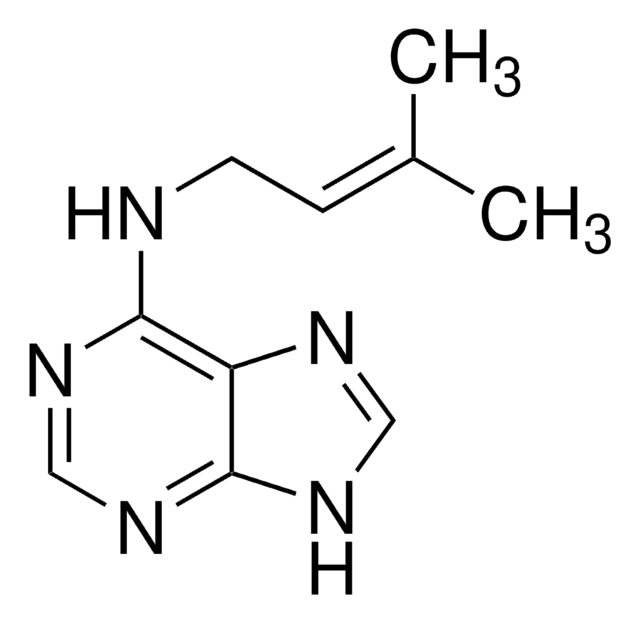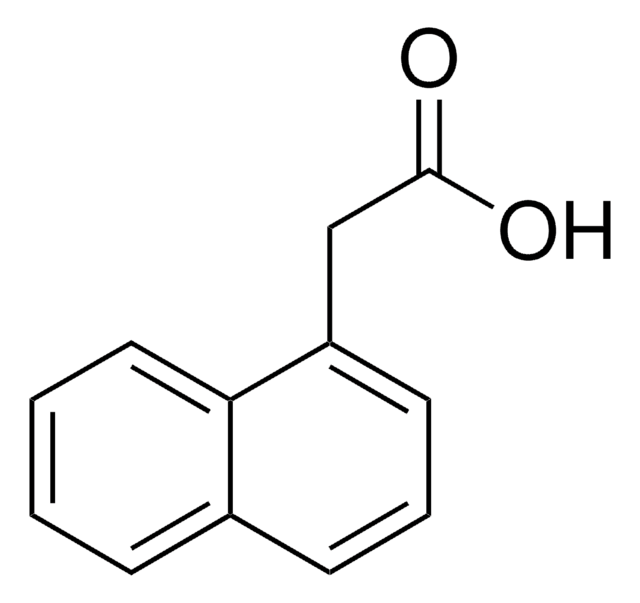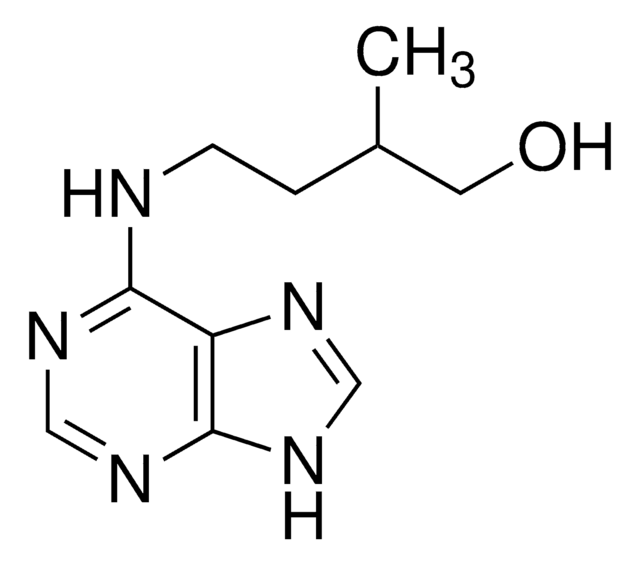Z0164
Zeatin
BioReagent, suitable for plant cell culture, powder
Synonym(s):
6-(4-Hydroxy-3-methylbut-2-enylamino)purine
About This Item
Recommended Products
product line
BioReagent
form
powder
technique(s)
cell culture | plant: suitable
color
off-white to yellow
application(s)
agriculture
storage temp.
−20°C
SMILES string
C\C(CO)=C/CNc1ncnc2[nH]cnc12
InChI
1S/C10H13N5O/c1-7(4-16)2-3-11-9-8-10(13-5-12-8)15-6-14-9/h2,5-6,16H,3-4H2,1H3,(H2,11,12,13,14,15)/b7-2+
InChI key
UZKQTCBAMSWPJD-FARCUNLSSA-N
Looking for similar products? Visit Product Comparison Guide
Related Categories
General description
Biochem/physiol Actions
Other Notes
Storage Class
11 - Combustible Solids
wgk_germany
WGK 3
flash_point_f
Not applicable
flash_point_c
Not applicable
ppe
Eyeshields, Gloves, type N95 (US)
Certificates of Analysis (COA)
Search for Certificates of Analysis (COA) by entering the products Lot/Batch Number. Lot and Batch Numbers can be found on a product’s label following the words ‘Lot’ or ‘Batch’.
Already Own This Product?
Find documentation for the products that you have recently purchased in the Document Library.
Customers Also Viewed
Our team of scientists has experience in all areas of research including Life Science, Material Science, Chemical Synthesis, Chromatography, Analytical and many others.
Contact Technical Service